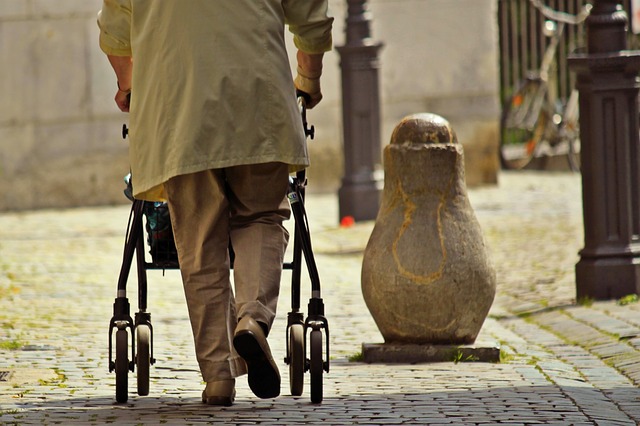Mobility Issues Don’t Have to Prevent Seniors from Aging at Home
 When an elderly parent wants to remain in their own home, most adult children will do all that they can to make that possible. When a parent has mobility issues, however, many children throw in the towel and decide that “aging in place” simply isn’t possible.
When an elderly parent wants to remain in their own home, most adult children will do all that they can to make that possible. When a parent has mobility issues, however, many children throw in the towel and decide that “aging in place” simply isn’t possible.
This is especially true if a spouse who is in better health is taking on many of the caregiving tasks. If one parent needs help being repositioned or transferred from bed to bathroom, this can cause falls, back injuries and chronic pain for the spouse helping make these moves. Even in-home caregivers run the risk of injuring themselves or the patient in such scenarios.
Thankfully, mobility issues do not mean staying at home is automatically out of the question. Instead, it may be time to look into the possibility of a patient lift. While there are several types of patient lifts, they all serve one primary function – to ease the process of transferring a person from one place to another such as chair to bed, sitting to standing, or bed to toilet.
Patient lifts have slings that are placed carefully under the individual. Once the sling is positioned correctly, the caregiver activates the lifting function. No matter what kind of lift is used, it is imperative that the person operating the lift is properly trained to use it.
So how do you know if your loved one could benefit from a patient lift? At Physicians Choice Private Duty, we perform in-home evaluations to determine whether or not a lift is necessary. If it is, we have trained caregivers who have experience using lifts so everyone is safe.
If your loved one has extremely limited mobility, poor balance or little strength, it is probably time to consider a lift. Physical limitations aren’t the only thing to consider, however. A patient with a neurological condition that isn’t able to understand or follow directions or someone who suffers from a condition that impairs cognitive or motor function would likely benefit from a lift as well. This includes patients with Alzheimer’s or Parkinson’s diseases or who has suffered a stroke.
There are several types of lifts available. Manual models are less expensive, use hydraulic power and are typically intended for in-home use. Electric models use a rechargeable battery or electrical outlet. Electrical lifts cost more but are easier to use and more convenient than manual models. While there are a wide variety of lifts, they usually come down to three basic types:
- Stand-to-Sit: These lifts are often referred to as stand assist lifts or stand up lifts. They are designed for seniors who can sit independently and bear some amount of weight but have a hard time moving from a sitting to standing position or a standing to sitting position on their own. These lifts allow seniors to continue to remain mobile instead of being confined to a wheelchair.
- Floor-Based: Often referred to by the brand name Hoyer, this type of floor-based lift is a crane-like device that has a wide base with wheels that is able to facilitate a variety of transfers, including from room to room.
- Overhead: Mounted on overhead track systems, these lifts move patients from room to room without taking up floor space.
While many families may believe that patient lifts are cost-prohibitive, the good news is that patient lifts may be covered by private insurance or Medicare Part D if they are medically necessary.
The sad fact is, not every senior will be able to remain in their home indefinitely. However, many seniors with mobility issues will still have the option thanks to the wide variety of patient lifts available.


